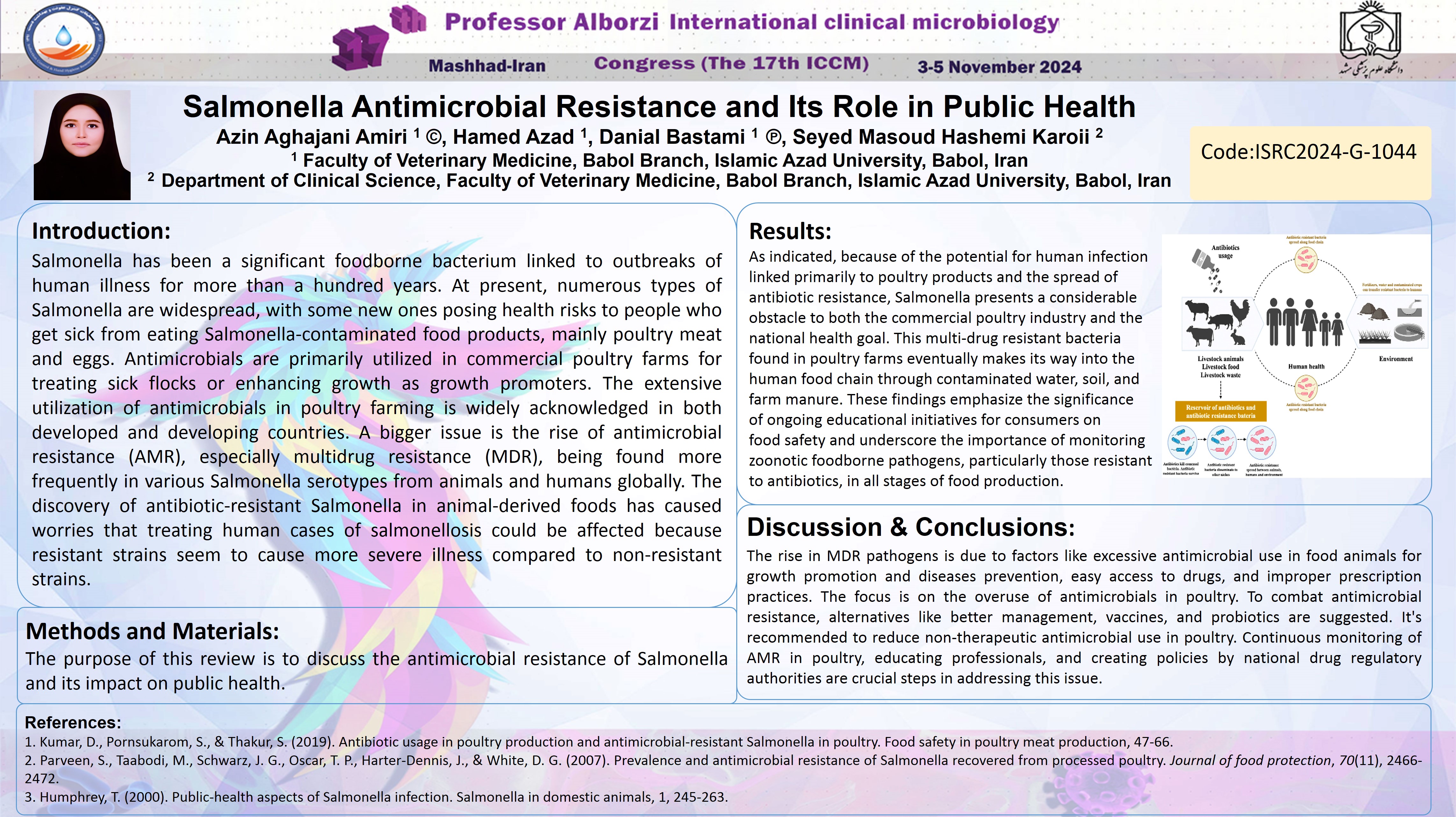مقاومت آنتی بیوتیکی سالمونلا و نقش آن در بهداشت عمومی
کد: G-1044
نویسندگان: Azin Aghajani Amiri ©, Hamed Azad, Danial Bastami ℗, Seyed Masoud Hashemi Karoii
زمان بندی: زمان بندی نشده!
دانلود: دانلود پوستر
خلاصه مقاله:
خلاصه مقاله
Salmonellosis is a significant zoonotic illness that is widely distributed worldwide. Salmonella is recognized as one of the predominant human pathogens found in poultry. As commercial poultry industries have expanded globally, the connection between poultry and human Salmonella infections has become acknowledged. Poultry is spread throughout the human food supply. Food-related diseases are a major health risk for people worldwide, among many other potential sources of illnesses. Salmonella is the most common microorganism out of many foodborne pathogens, leading to a large number of deaths globally. Managing zoonotic Salmonella is of great importance. In animal farming, antimicrobial agents are utilized for therapy, prophylaxis, and growth promotion. Salmonella is a type of bacteria that has developed multiple antimicrobial resistance traits through the years, making it a zoonotic threat. Various factors, including genes found on plasmids, transposons, and gene cassettes, contribute to the development of resistance. Due to the extensive use of antimicrobials in poultry, multidrug-resistant salmonella is a common phenomenon, with isolates resistant to certain antibiotics classified as MDR, and those resistant to additional antibiotics as XDR. Antimicrobial resistance leads to higher rates of sickness, death, and illness-related expenses. This resistance represents a significant danger to human health due to its zoonotic significance. Salmonellosis continues to be a common food-borne disease caused by bacteria, posing a significant global public health issue. In this study, we discuss Salmonella antimicrobial resistance and its role in public health.
کلمات کلیدی
Salmonellosis, poultry, public health, Antimicrobial resistance, AMR
